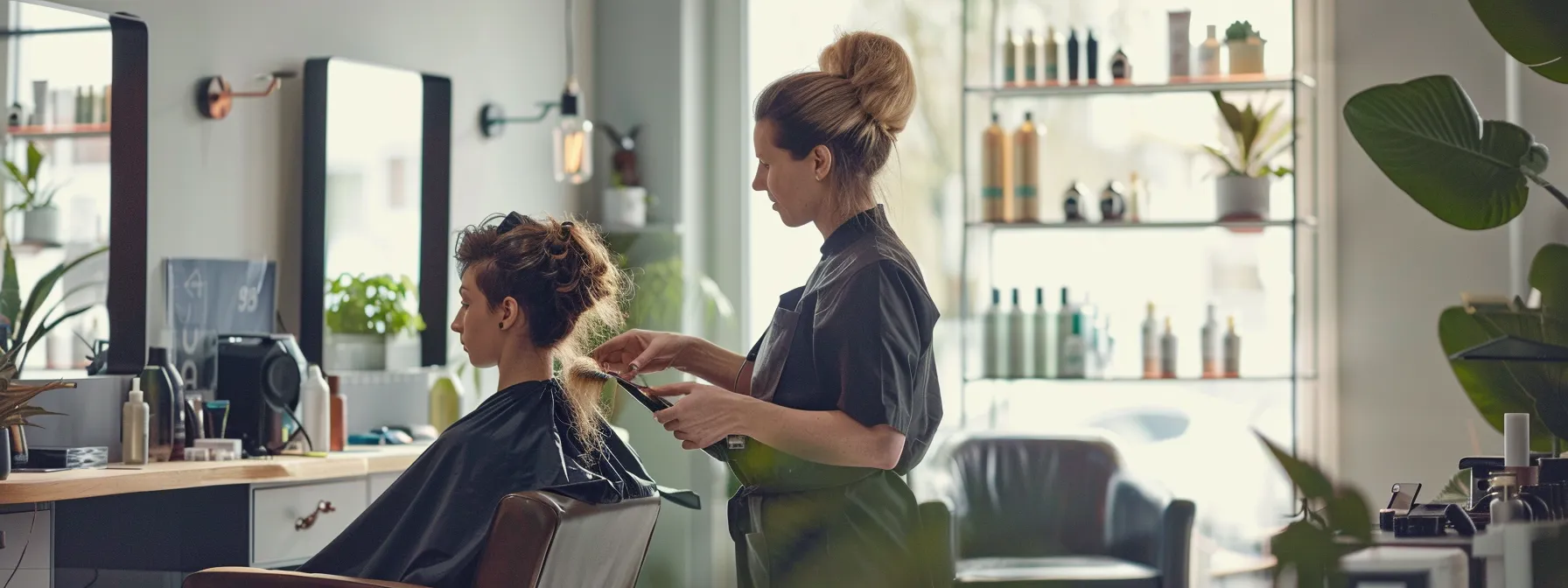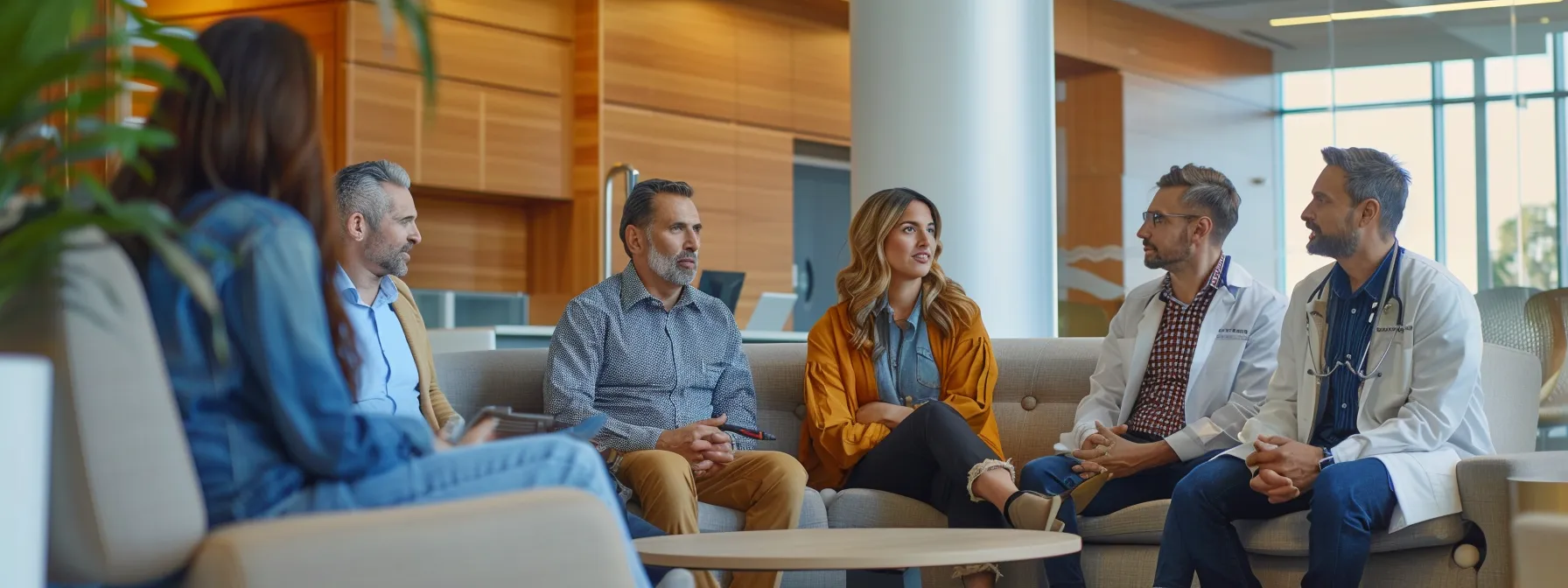Boost Your Salon’s Visibility With Custom SEO Strategies
In today’s digital age, hair and beauty salons must leverage effective SEO strategies to stand out in a competitive market. For hairdressers seeking to boost their online visibility, seo automation services like those offered by omnitools.uk can prove invaluable. These tools help beauty salon owners optimize their websites, attract more clients, and grow their businesses efficiently. In this article, we’ll explore essential SEO techniques tailored specifically for hair salons, empowering you to elevate your online presence and attract more clients to your chair. Keep reading to discover how you can transform your salon’s digital footprint and stay ahead of the competition.
Key Takeaways
- Effective SEO strategies are crucial for improving a hair salon’s online visibility and attracting more clients
- Local SEO plays a vital role in increasing a salon’s visibility within its target market
- Integrating social media and SEO strategies creates a powerful synergy for enhancing a salon’s online presence
Essential SEO Strategies to Elevate Your Hair Salon’s Online Presence
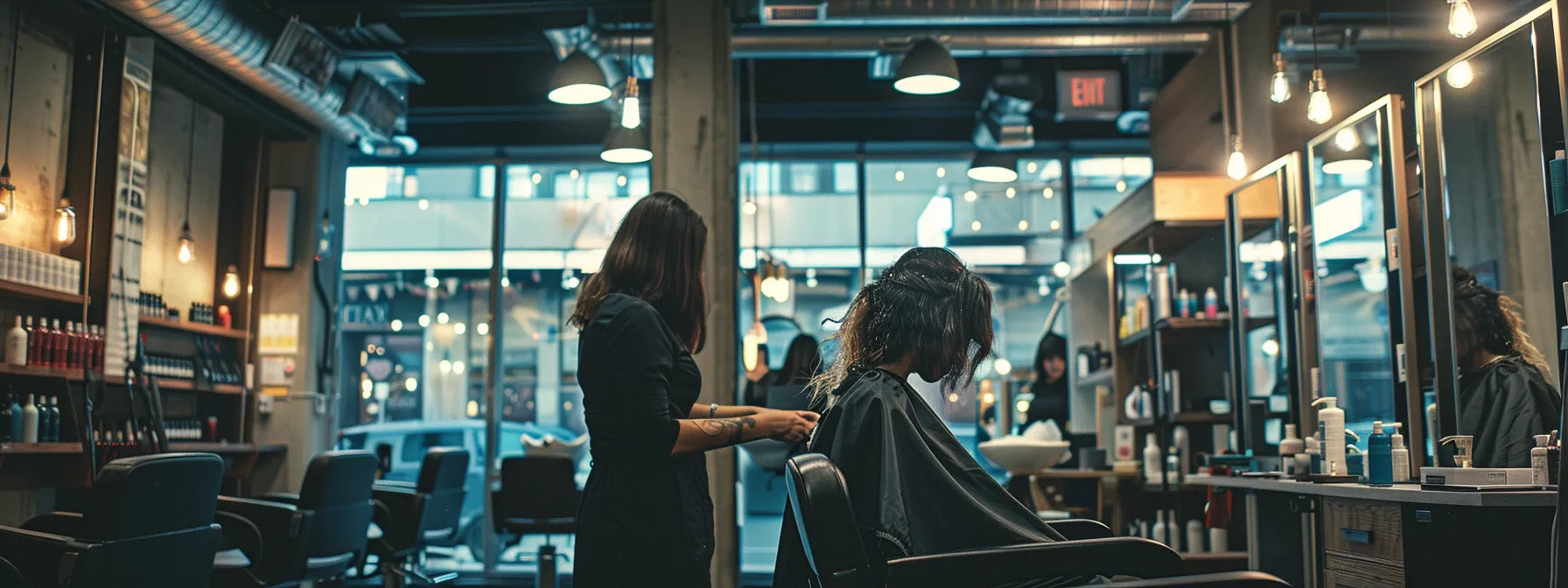

Effective SEO strategies play a crucial role in improving a hair salon’s online visibility. By implementing targeted techniques, salon owners can attract more clients through the internet using omnitools.uk. These strategies encompass various aspects, from keyword research and backlink building to content creation and local SEO optimization. Additionally, integrating elements such as email marketing, web design, and advertising can further enhance a salon’s digital presence. By focusing on these key areas, hairdressers can ensure their services and unique hairstyle offerings reach a wider audience with the help of seo automation services, ultimately driving more foot traffic to their establishments.
Conducting Comprehensive Keyword Research for Hairdressers
Effective keyword research forms the foundation of successful search engine optimization for hair salons. Hairdressers must identify relevant terms and phrases potential clients use when searching for salon services. This process involves utilizing tools like Google Analytics to analyze website traffic and uncover popular search queries.
Local search plays a crucial role in keyword research for salons, as most clients seek nearby services. Salon owners should focus on location-specific keywords and long-tail phrases that reflect their unique offerings. Incorporating these targeted keywords into website content, meta descriptions, and page titles helps improve visibility in search engine results.
Regularly monitoring and updating keyword strategies ensures salons stay competitive in the ever-changing digital landscape. By analyzing search trends and adapting their approach, hairdressers can continually refine their SEO efforts. This ongoing process helps salons attract more potential clients and maintain a strong online presence.
Building a Solid Backlink Profile for Your Salon Website
A strong backlink profile enhances a salon’s domain authority and search engine rankings. Hairdressers should focus on acquiring high-quality links from reputable websites within the beauty industry. This process involves creating valuable content that other sites want to reference and share with their audiences.
Salon owners can leverage content management systems like WordPress to streamline their website management and facilitate link-building efforts. By consistently publishing informative articles, tutorials, and industry insights, salons position themselves as authoritative sources in the hairstyling community. This approach naturally attracts backlinks from other websites seeking to provide valuable information to their readers.
Building a salon’s brand through strategic partnerships and collaborations can also contribute to a robust backlink profile. Participating in local events, sponsoring beauty-related causes, and engaging with influencers in the beauty industry can generate valuable backlinks and increase the salon’s online visibility. These efforts not only improve search engine rankings but also enhance the salon’s reputation and credibility within the community.
Crafting Engaging, SEO-Optimized Content for Hair Salon Clients
Creating engaging, SEO-optimized content for hair salon clients requires a deep understanding of the target audience and their needs. Salon owners must leverage keyword research to identify topics that resonate with potential customers and address their hair care concerns. By incorporating these keywords naturally into blog posts, service descriptions, and other website content, salons can improve their search engine rankings and attract more visitors.
Utilizing a user-friendly website builder simplifies the process of designing and developing an attractive, SEO-friendly salon website. These platforms often include built-in optimization features, making it easier for hairdressers to implement best practices without extensive web development knowledge. A well-designed website not only showcases the salon’s services but also provides a seamless user experience, encouraging visitors to book appointments and explore the salon’s offerings.
Regular content updates and maintenance are essential for maintaining a strong online presence. Salon owners should focus on creating diverse content types, such as how-to guides, product reviews, and seasonal hair care tips, to keep their audience engaged and provide value beyond basic service information. By consistently producing high-quality, relevant content, salons can establish themselves as industry authorities and improve their search engine visibility.
Leveraging Local SEO for Increased Salon Visibility
Local SEO plays a crucial role in increasing a hair salon’s visibility within its target market. By optimizing their digital marketing efforts for local searches, salons can attract more customers who are actively seeking nearby services. This approach involves optimizing Google My Business listings, ensuring consistent NAP (Name, Address, Phone number) information across online directories, and encouraging customer reviews.
Implementing location-specific keywords and creating locally relevant content helps salons rank higher in Google search results for their area. Unlike law firms that may target broader regions, hair salons benefit from hyper-local strategies that focus on attracting customers within a specific neighborhood or city. This targeted approach ensures that marketing efforts reach potential clients who are most likely to visit the salon.
Salons can further enhance their local SEO by participating in community events, collaborating with nearby businesses, and leveraging social media platforms to engage with local audiences. These activities not only improve search engine rankings but also help build a strong local reputation, ultimately driving more foot traffic to the salon.
Monitoring and Adjusting Your SEO Strategy for Peak Performance
Effective SEO monitoring requires salon owners to regularly analyze key performance indicators and adjust strategies accordingly. Tools like Google Analytics provide valuable insights into website traffic, user behavior, and search rankings, enabling hairdressers to make data-driven decisions. By consistently tracking these metrics, salons can identify areas for improvement and refine their SEO approach.
Link building and content optimization efforts should be continuously evaluated and refined based on research and performance data. Salon owners can assess the effectiveness of their menu descriptions, service pages, and blog posts by monitoring engagement metrics and search rankings. This ongoing analysis allows salons to adapt their content strategy to better align with customer needs and search trends.
Collecting and responding to customer feedback is crucial for maintaining a positive online reputation and improving the salon experience. Encouraging clients to leave reviews and share their experiences can boost local SEO rankings and attract new customers. Additionally, salon owners should regularly update their email address and contact information across all online platforms to ensure seamless communication with potential clients.
Local SEO takes salon visibility to the next level. Discover how to dominate your area’s search results and attract more nearby clients.
Unlocking the Power of Local SEO for Your Hair Salon
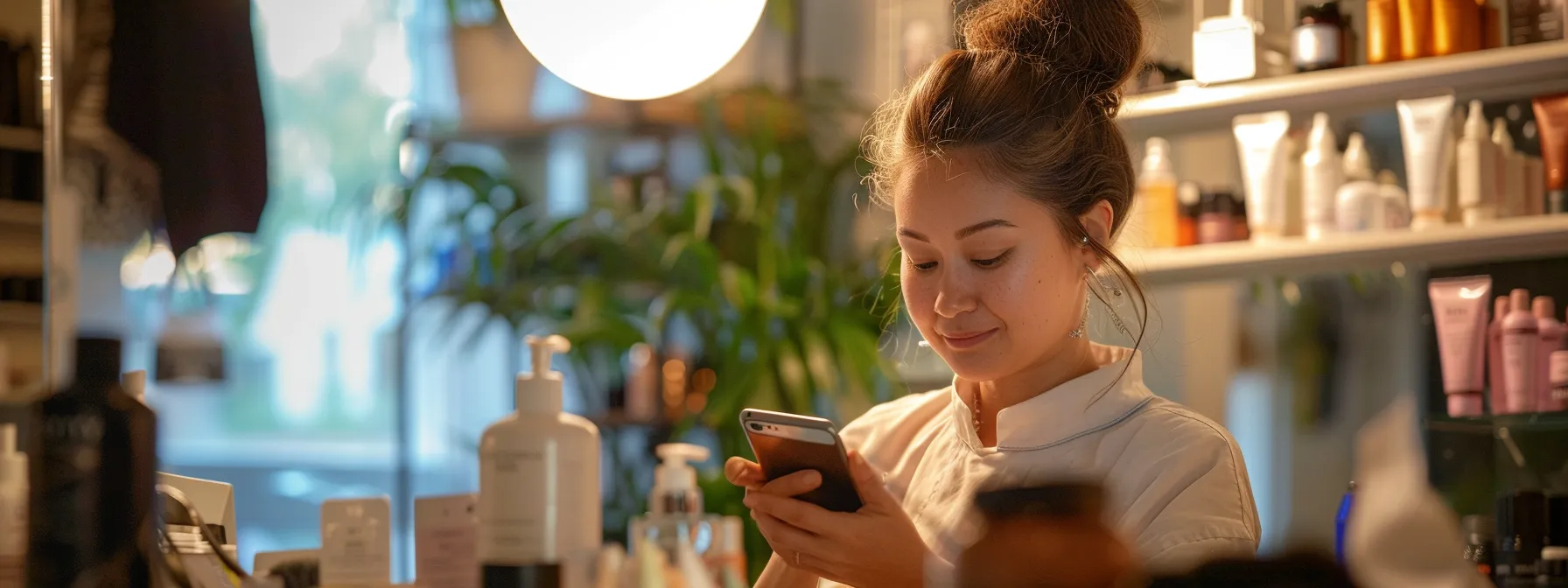

Local SEO serves as a powerful marketing strategy for hair salons, enabling them to target nearby customers effectively. By implementing tailored techniques, salon owners can significantly boost their online visibility and attract more local clients. This approach encompasses various aspects, including optimizing Google My Business listings, managing customer reviews, leveraging local directory listings, and incorporating geo-targeted keywords. These tactics work together to enhance a salon’s digital presence, ultimately leading to increased foot traffic and profit. As the beauty industry continues to evolve, mastering local SEO becomes essential for salons to stand out in their communities and effectively tag potential customers searching for nearby hair care services.
Claiming and Optimizing Your Google My Business Listing
Claiming and optimizing a Google My Business (GMB) listing is crucial for hair salons seeking to improve their local search visibility. This process involves verifying ownership of the business and providing accurate, comprehensive information about the salon’s services, hours, and location. A well-optimized GMB profile serves as a foundation for local SEO efforts, complementing other digital marketing strategies such as web design services and domain management.
Salon owners should regularly update their GMB listings with fresh content, including photos, posts, and special offers. This ongoing maintenance helps build credibility with potential customers and search engines alike. Additionally, integrating GMB with other marketing channels, such as the salon’s website and social media profiles, creates a cohesive online presence that supports overall SEO goals.
Leveraging GMB’s features, such as the Q&A section and booking functionality, can enhance the salon’s visibility and convenience for potential clients. These tools, combined with strategic use of ads and proper hosting solutions, create a comprehensive digital strategy that maximizes the salon’s online reach and attracts more local customers.
Encouraging Happy Clients to Leave Positive Reviews
Encouraging satisfied clients to leave positive reviews significantly boosts a salon’s local SEO efforts. Salon owners should implement strategies to prompt happy customers to share their experiences online, particularly on platforms like Google Business Profile. This process not only enhances the salon’s reputation but also improves its visibility in local search results.
Integrating review requests into the salon’s website design and development can streamline the feedback process. Creating a dedicated page or section on the salon website that links directly to review platforms makes it easier for clients to leave feedback. This approach, combined with effective local SEO techniques, helps build a strong online presence for the salon.
Training staff to politely request reviews from satisfied customers can further enhance the salon’s online reputation. Emphasizing the importance of genuine, detailed feedback helps potential clients make informed decisions. By consistently collecting and showcasing positive reviews, salon owners can improve their Google Business Profile rankings and attract more local customers.
Navigating Local Directory Listings for Maximum Visibility
Navigating local directory listings plays a crucial role in maximizing a hair salon’s visibility. Salon owners must ensure their business information appears consistently across various online directories, including Yelp, Yellow Pages, and industry-specific platforms. This consistency enhances the salon’s credibility and improves its chances of appearing in local search results.
Utilizing a comprehensive directory management tool streamlines the process of maintaining accurate listings across multiple platforms. These tools often provide valuable insights into the salon’s online presence and help identify areas for improvement. By leveraging such tools, salon owners can efficiently manage their digital footprint and enhance their local SEO efforts.
Optimizing directory listings goes beyond basic contact information. Salon owners should include high-quality images of their work, detailed service descriptions, and links to their website and social media profiles. This approach improves the usability of directory listings and provides potential clients with a comprehensive overview of the salon’s offerings:
- Claim and verify listings on major directories
- Ensure consistent NAP (Name, Address, Phone) information across all platforms
- Include high-quality images showcasing the salon’s work
- Provide detailed service descriptions and pricing information
- Link to the salon’s website and social media profiles
- Encourage and respond to customer reviews on directory platforms
Using Geo-Targeted Keywords to Attract Local Clients
Incorporating geo-targeted keywords into a salon’s SEO strategy effectively attracts local clients searching for hair care services. These location-specific terms, such as “best hair salon in [city name]” or “[neighborhood] cosmetology services,” help salons appear in relevant local search results. By integrating these keywords into website content, meta descriptions, and landing pages, salon owners can improve their visibility to potential customers in their target area.
Analyzing data from search trends and customer feedback provides valuable insights for selecting the most effective geo-targeted keywords. Salon owners can use this information to tailor their content and marketing efforts to meet the specific needs and preferences of their local clientele. This approach not only enhances search engine rankings but also demonstrates the salon’s understanding of local hair care trends and customer expectations.
Creating location-specific landing pages for different service areas or neighborhoods can further boost a salon’s local SEO efforts. These pages should incorporate relevant geo-targeted keywords and provide detailed information about the salon’s offerings and expertise in that particular area. By implementing this strategy, salon owners can effectively capture the attention of potential clients searching for hair care services in their vicinity:
Successful local SEO propels hair salons to new heights of visibility and clientele. The next step amplifies this impact through an optimized website tailored for hairdressers.
Crafting an SEO-Optimized Website for Hairdressers


Crafting an SEO-optimized website for hairdressers requires a comprehensive approach that combines technical expertise with industry-specific knowledge. A well-designed salon website serves as the cornerstone of effective digital marketing, incorporating elements such as user-friendly interfaces, mobile optimization, efficient site structure, and enhanced loading speeds. By leveraging social media marketing and cutting-edge technology, salon owners can create a powerful online presence that attracts and retains clients. This process often involves collaboration with SEO experts and web development companies to ensure the website meets both user expectations and search engine requirements. The following sections explore key strategies for developing a high-performing salon website that effectively showcases services and drives business growth.
Designing a User-Friendly Website Interface
Designing a user-friendly website interface for hairdressers requires a delicate balance between aesthetics and functionality. Unlike a lawyer‘s website, which may prioritize information density, a hair salon’s interface should showcase visual elements that highlight the stylist’s expertise. Incorporating a gallery of hair transformations and an intuitive booking system can significantly enhance the user experience, making it easier for potential clients to envision their desired look and schedule appointments.
The website‘s navigation should mirror the efficiency of a well-organized hair cuttery, guiding visitors seamlessly through services, pricing, and stylist profiles. Implementing a responsive design ensures the site adapts to various devices, allowing clients to browse and book appointments on-the-go. This approach aligns with modern consumer behavior and search engine algorithms that favor mobile-friendly websites.
Integrating software solutions for online bookings and customer management can streamline operations and improve client satisfaction. A virtual business card feature, prominently displaying contact information and social media links, encourages engagement beyond the website. These elements work together to create a cohesive online presence that reflects the salon’s professionalism and attention to detail, ultimately driving more traffic and conversions.
Prioritizing Mobile Optimization for Salon Websites
Mobile optimization plays a crucial role in enhancing a salon’s online presence and reputation. With the majority of clients searching for hair services on their smartphones, a mobile-friendly website ensures seamless browsing and booking experiences. Salon owners must prioritize responsive design, which adapts the web page layout to various screen sizes, maintaining the integrity of the logo and essential information across devices.
Optimizing salon websites for mobile users extends beyond visual adjustments. Fast loading times are essential for retaining visitors and improving search engine rankings. Salon owners should compress images, minimize code, and leverage browser caching to enhance mobile performance. Additionally, incorporating click-to-call buttons and easy-to-navigate menus improves user experience, making it simple for potential clients to contact the salon or book appointments.
Mobile optimization also involves streamlining content for on-the-go users. Condensing service descriptions, creating concise FAQ sections, and implementing expandable menus help mobile users quickly find relevant information. By prioritizing mobile optimization, salon websites can effectively cater to the growing number of smartphone users, ultimately driving more foot traffic to the physical clinic:
Implementing an Effective Site Structure and Navigation
Implementing an effective site structure and navigation enhances user experience and supports revenue growth for hair salons. A well-organized website allows visitors to easily find information about services, prices, and stylists, increasing the likelihood of conversions. The home page should serve as a central hub, providing clear pathways to essential sections and incorporating security features to build trust with potential clients.
Content marketing efforts benefit from a logical site structure that groups related topics and services together. This organization aids search engines in understanding the website‘s hierarchy and relevance, potentially improving search rankings. Salon owners should prioritize creating intuitive menu structures and utilizing internal linking strategies to guide visitors through their site efficiently.
An effective site structure also facilitates the implementation of schema markup, which can enhance the salon’s visibility in search results. By organizing content into clearly defined categories and subcategories, salon websites can provide search engines with valuable context about their services and expertise. This structured approach not only improves SEO performance but also streamlines the process of updating and expanding the website as the salon’s offerings evolve.
Enhancing Site Speed to Improve User Experience and SEO
Enhancing site speed significantly improves user experience and SEO performance for hair salon websites across the United States. Fast-loading pages capture visitors’ attention and reduce bounce rates, increasing the likelihood of conversions. Search engines, particularly Google, factor site speed into their ranking algorithms, making it crucial for salons to optimize their websites for quick loading times.
Salon owners can improve site speed by optimizing images, minifying CSS and JavaScript, and leveraging browser caching. Implementing a content management system that prioritizes performance can streamline these processes and make it easier for salon staff to update information, including telephone numbers and service offerings. Regular performance audits help identify areas for improvement and ensure the website maintains optimal speed as new content is added.
Mobile optimization plays a critical role in site speed enhancement, as an increasing number of potential clients search for hair services on their smartphones. Salon websites should employ responsive design techniques and optimize content delivery for mobile devices to provide a seamless browsing experience. By prioritizing site speed, salon owners can create a competitive edge in the digital landscape, attracting more clients and improving their online visibility.
High-quality content drives SEO success for hair salons. Engaging articles and visuals attract potential clients and boost search rankings.
Leveraging High-Quality Content for Hair Salon SEO Success


High-quality content serves as a cornerstone for successful hair salon SEO strategies. By creating valuable, engaging, and visually appealing content, salon owners can attract and retain potential clients while improving their search engine rankings. This approach encompasses various elements, including informative blog posts on hair care and styling tips, visually striking representations of salon services, strategic keyword integration, and compelling client testimonials. These content components work synergistically to enhance a salon’s online presence, showcase expertise, and build trust with potential customers. By leveraging these content strategies, hair salons can effectively differentiate themselves in a competitive market and drive organic traffic to their websites.
Blogging About Hair Care and Styling Tips to Engage Visitors
Blogging about hair care and styling tips engages visitors and positions salons as industry authorities. Regular posts on topics like seasonal hair trends, product recommendations, and styling techniques attract potential clients seeking expert advice. This content strategy improves search engine visibility while providing value to readers.
Salon owners can leverage their expertise to create unique, informative content that addresses common hair care concerns. Articles discussing proper washing techniques, heat styling tips, and natural hair care methods resonate with readers and encourage repeat visits to the salon’s website. Incorporating relevant keywords naturally within these posts further enhances SEO performance.
Visual content, such as before-and-after photos and step-by-step styling tutorials, complements written blog posts and increases engagement. This multimedia approach caters to different learning styles and showcases the salon’s skills, encouraging readers to book appointments and try new styles. Regularly updating the blog with fresh, relevant content keeps the website dynamic and improves its search engine rankings.
Creating Visual Content That Highlights Your Salon’s Services
Visual content plays a crucial role in highlighting a salon’s services and attracting potential clients. High-quality images and videos showcase the salon’s expertise, allowing visitors to visualize the results they can expect. Professional photographs of hairstyles, color treatments, and salon interiors create a compelling visual narrative that engages website visitors and encourages them to book appointments.
Incorporating before-and-after galleries effectively demonstrates the transformative power of the salon’s services. These visual comparisons provide tangible evidence of the stylists’ skills and help potential clients envision their own makeovers. Salon owners should prioritize creating diverse galleries that represent a wide range of hair types, styles, and treatments to appeal to a broad audience.
Video content, such as styling tutorials and behind-the-scenes glimpses, adds depth to the salon’s visual storytelling. These dynamic elements not only showcase the salon’s expertise but also help build a connection with potential clients. By creating a visually rich website, salon owners can effectively communicate their brand identity and service quality:
Utilizing Keywords in Content for Enhanced SEO
Effective keyword utilization enhances a hair salon’s SEO performance, improving visibility in search engine results. Salon owners should conduct thorough keyword research to identify relevant terms and phrases potential clients use when searching for hair services. Integrating these keywords naturally into website content, including service descriptions, blog posts, and meta tags, helps search engines understand the salon’s offerings and relevance to user queries.
Long-tail keywords play a crucial role in targeting specific salon services and clientele. These phrases, such as “balayage highlights for brunettes” or “men’s fade haircut techniques,” attract highly qualified leads and demonstrate the salon’s expertise in particular areas. By incorporating a mix of broad and specific keywords, salon websites can capture a wider range of search intents and improve their overall search rankings.
Keyword optimization extends beyond on-page content to include technical elements like title tags, meta descriptions, and image alt text. These components provide additional opportunities to incorporate relevant keywords and improve the salon’s visibility in search results. Regular analysis of keyword performance helps salon owners refine their SEO strategy and adapt to changing search trends:
Showcasing Client Testimonials and Transformations
Showcasing client testimonials and transformations provides powerful social proof that can significantly boost a salon’s credibility and attract new customers. Authentic reviews and before-and-after photos demonstrate the salon’s expertise and quality of service, helping potential clients make informed decisions. Salon owners should prominently feature these testimonials and visual transformations on their websites and social media platforms to maximize their impact.
Creating dedicated pages or sections for client success stories allows visitors to explore real-life experiences and results. These pages should include detailed descriptions of the services provided, the client’s initial concerns, and the final outcome. Incorporating high-quality images that highlight the transformation process further enhances the visual appeal and effectiveness of these testimonials.
Regularly updating and curating client testimonials and transformations ensures that the salon’s website showcases its most recent and impressive work. Salon owners can encourage satisfied clients to share their experiences by implementing a simple review system or offering incentives for feedback. This ongoing collection of positive reviews and visual evidence of successful transformations contributes to the salon’s overall SEO strategy by providing fresh, relevant content that resonates with potential clients.
Content strategies only scratch the surface of effective hair salon SEO. Delving into keyword research unlocks new opportunities to attract and engage potential clients.
Mastering Keyword Research for Hair Salon SEO


Mastering keyword research is essential for hair salons aiming to enhance their online visibility and attract more clients. By identifying high-volume keywords specific to hairdressing services, balancing broad and long-tail terms, analyzing competitors, and utilizing effective tools and techniques, salon owners can develop a comprehensive SEO strategy. This approach enables salons to target diverse traffic sources, uncover untapped opportunities, and stay ahead of industry trends. Implementing a well-researched keyword strategy not only improves search engine rankings but also ensures that the salon’s website content aligns with potential clients’ search intent, ultimately driving more qualified leads and bookings.
Identifying High-Volume Keywords for Hairdressers
Identifying high-volume keywords for hairdressers involves analyzing search trends and user behavior to discover terms potential clients frequently use when seeking hair services. Salon owners can leverage tools like Google Keyword Planner and SEMrush to uncover popular search queries related to their offerings. These tools provide valuable insights into search volume, competition levels, and related keywords.
Effective keyword research for salons focuses on a combination of industry-specific terms and location-based phrases. Hairdressers should consider keywords that reflect their unique services, such as “balayage specialist” or “curly hair expert,” alongside more general terms like “haircut” or “hair coloring.” Including location modifiers helps target local clientele and improves visibility in local search results.
Analyzing seasonal trends and emerging hair care techniques can reveal valuable keyword opportunities for salons. By staying informed about the latest hairstyles and treatments, salon owners can identify and target high-volume keywords before they become oversaturated. This proactive approach allows salons to establish themselves as industry leaders and attract clients seeking cutting-edge services:
- Research industry-specific terms and trends
- Incorporate location-based keywords
- Utilize keyword research tools for data-driven insights
- Monitor seasonal trends and emerging techniques
- Analyze competitor keywords for inspiration
Balancing Broad and Long-Tail Keywords for Diverse Traffic
Balancing broad and long-tail keywords is crucial for hair salons to attract diverse traffic and maximize their online visibility. Broad keywords, such as “haircut” or “hair salon,” generate high search volumes but face intense competition. Long-tail keywords, like “natural hair braiding specialist in [city name],” target specific niches and often have lower competition, making them valuable for attracting highly qualified leads.
Salon owners should develop a keyword strategy that incorporates both broad and long-tail terms to capture a wide range of potential clients. This approach allows salons to compete for general searches while also targeting specific services or clientele. By analyzing search volumes and competition levels, salon owners can identify opportunities to rank for both types of keywords effectively.
Implementing a balanced keyword strategy involves distributing broad and long-tail terms across various website elements, including page titles, headers, and content. This strategic placement helps search engines understand the salon’s offerings and relevance to different search queries. A well-executed balance of keyword types can lead to improved search rankings and increased organic traffic:
Competitor Analysis to Discover Untapped Keyword Opportunities
Competitor analysis provides valuable insights into untapped keyword opportunities for hair salons. By examining the SEO strategies of successful competitors, salon owners can identify gaps in their own keyword coverage and discover new terms to target. This process involves analyzing competitors’ website content, meta tags, and backlink profiles to uncover high-performing keywords within the industry.
Utilizing SEO tools like Ahrefs or Moz can streamline the competitor analysis process, offering detailed reports on keyword rankings and organic search performance. Salon owners should focus on identifying keywords that competitors rank well for but are currently absent from their own strategy. This approach allows salons to expand their keyword portfolio and potentially capture market share from competitors.
Analyzing local competitors is particularly important for hair salons, as it reveals location-specific keyword opportunities and service-related terms that resonate with the target audience. By understanding the local competitive landscape, salon owners can refine their keyword strategy to better align with regional search trends and customer preferences. This localized approach can significantly improve a salon’s visibility in local search results and attract more nearby clients:
- Identify top-performing competitors in the local market
- Analyze competitors’ website content and meta tags
- Examine backlink profiles for valuable keyword insights
- Utilize SEO tools to uncover competitor keyword rankings
- Focus on location-specific and service-related terms
- Refine keyword strategy based on competitive analysis findings
Tool and Techniques for Effective Keyword Research
Effective keyword research for hair salons requires a combination of specialized tools and proven techniques. Google Keyword Planner, SEMrush, and Ahrefs provide valuable data on search volumes, competition levels, and related keywords. These tools enable salon owners to identify high-potential terms and phrases that align with their services and target audience.
Leveraging industry-specific forums, social media platforms, and online communities offers insights into the language and terminology used by potential clients. Salon owners can analyze discussions and trending topics to uncover niche keywords and emerging trends in the hair care industry. This approach helps salons stay ahead of the curve and target keywords before they become oversaturated.
Implementing a comprehensive keyword research strategy involves analyzing search intent, evaluating keyword difficulty, and considering seasonal fluctuations in search behavior. By combining these techniques with data from keyword research tools, salon owners can develop a robust SEO strategy that drives targeted traffic to their websites:
- Utilize keyword research tools for data-driven insights
- Monitor industry forums and social media for trending topics
- Analyze search intent to target relevant keywords
- Evaluate keyword difficulty to prioritize ranking opportunities
- Consider seasonal trends in search behavior
- Combine multiple research techniques for a comprehensive strategy
Link-building strategies elevate hair salon websites beyond keyword optimization. Innovative techniques attract high-quality backlinks, boosting search rankings and client reach.
Innovative Link-Building Strategies for Hair Salon Websites


Innovative link-building strategies play a crucial role in enhancing the online visibility of hair salon websites. By implementing targeted techniques, salon owners can establish valuable connections with industry-related platforms, local businesses, and potential clients. These strategies encompass various approaches, including guest blogging on popular hair and beauty sites, partnering with local businesses for cross-promotion, creating shareable infographics about hair care, and engaging in community events for backlink opportunities. By leveraging these tactics, hair salons can build a robust backlink profile, improve their search engine rankings, and attract more potential clients to their websites. The following sections explore each of these strategies in detail, providing salon owners with actionable insights to elevate their digital presence and stand out in the competitive beauty industry.
Guest Blogging on Popular Hair and Beauty Sites
Guest blogging on popular hair and beauty sites presents a valuable opportunity for salon owners to showcase their expertise and build high-quality backlinks. By contributing informative and engaging content to well-established platforms, hairdressers can reach a wider audience and position themselves as industry authorities. This strategy not only improves the salon’s search engine rankings but also drives targeted traffic to its website.
Salon owners should focus on creating unique, value-driven content that addresses common hair care concerns, introduces innovative styling techniques, or explores emerging beauty trends. By offering practical tips and insights, guest posts can attract readers’ attention and encourage them to visit the salon’s website for more information. Incorporating relevant keywords and strategic internal links within these articles further enhances their SEO impact.
Building relationships with editors and site owners in the hair and beauty niche is crucial for successful guest blogging campaigns. Salon owners can leverage their industry connections, attend beauty events, and engage with online communities to identify potential guest blogging opportunities. Consistently delivering high-quality content and maintaining professional relationships can lead to recurring guest posting opportunities, establishing the salon as a trusted voice in the beauty industry.
Partnering With Local Businesses for Cross-Promotion
Partnering with local businesses for cross-promotion offers hair salons a powerful way to expand their reach and build valuable backlinks. By collaborating with complementary businesses such as makeup artists, wedding planners, or fashion boutiques, salons can tap into new customer bases and strengthen their local SEO presence. These partnerships often involve exchanging website links, sharing social media content, and creating joint promotional offers.
Salon owners can leverage these partnerships to create unique content that showcases their expertise alongside other local services. For example, collaborating with a wedding planner to produce a bridal beauty guide allows both businesses to demonstrate their value to potential clients while generating high-quality, linkable content. This approach not only enhances the salon’s online visibility but also fosters community relationships and establishes the business as a local industry leader.
Implementing cross-promotional strategies requires careful planning and communication between partners. Salon owners should focus on developing mutually beneficial agreements that align with their brand values and target audience. By selecting partners with complementary services and similar quality standards, salons can ensure that these collaborations enhance their reputation and attract ideal clients.
Creating Shareable Infographics About Hair Care
Creating shareable infographics about hair care offers hair salons a powerful tool for building backlinks and increasing online visibility. These visually appealing, information-rich graphics combine eye-catching design with valuable hair care tips, making them highly shareable across social media platforms and industry websites. Salon owners can leverage infographics to showcase their expertise, educate potential clients, and attract high-quality backlinks from reputable sources.
Effective hair care infographics focus on topics that resonate with the target audience, such as seasonal hair trends, proper styling techniques, or product recommendations. By addressing common hair care concerns and providing practical solutions, salons can create content that users are eager to share and reference. This approach not only generates backlinks but also positions the salon as a trusted source of hair care information.
To maximize the impact of infographics, salon owners should develop a comprehensive distribution strategy. This approach includes sharing the content on social media platforms, reaching out to industry influencers, and submitting the infographics to relevant online directories and forums. By actively promoting their infographics, salons can increase the likelihood of attracting high-quality backlinks and driving traffic to their websites:
- Identify popular hair care topics and trends
- Design visually appealing and informative infographics
- Share content across multiple social media platforms
- Reach out to industry influencers and websites for potential features
- Submit infographics to relevant online directories and forums
- Monitor and track the performance of shared infographics
Engaging in Community Events for Backlink Opportunities
Engaging in community events offers hair salons valuable opportunities to build backlinks and enhance their local SEO presence. By participating in charity fundraisers, sponsoring local sports teams, or organizing hair care workshops, salons can generate positive publicity and attract high-quality backlinks from event organizers, local news outlets, and community websites. These backlinks not only improve search engine rankings but also strengthen the salon’s reputation within the community.
Salon owners can leverage their expertise to create unique, event-specific content that showcases their involvement and provides value to attendees. For example, offering free hair consultations at a local fashion show or demonstrating quick styling techniques at a community fair can generate buzz and encourage event organizers to link back to the salon’s website. This approach combines community engagement with effective link-building strategies, creating a win-win situation for both the salon and the local community.
To maximize the impact of community event participation, salon owners should develop a comprehensive outreach strategy. This approach includes contacting local media outlets, collaborating with event organizers on promotional materials, and creating dedicated landing pages for each event. By actively promoting their involvement and providing valuable resources, salons can increase the likelihood of earning high-quality backlinks and attracting new clients:
- Identify relevant community events and sponsorship opportunities
- Create event-specific content and promotional materials
- Reach out to local media outlets for coverage
- Collaborate with event organizers on cross-promotional efforts
- Develop dedicated landing pages for each community event
- Follow up with participants and organizers to secure backlinks
Innovative link-building strategies lay the foundation for online success, but they’re just the beginning. Integrating social media and SEO takes your salon’s digital presence to new heights, attracting more clients and boosting your brand‘s visibility.
Boosting Your Salon’s Visibility With Social Media and SEO Integration
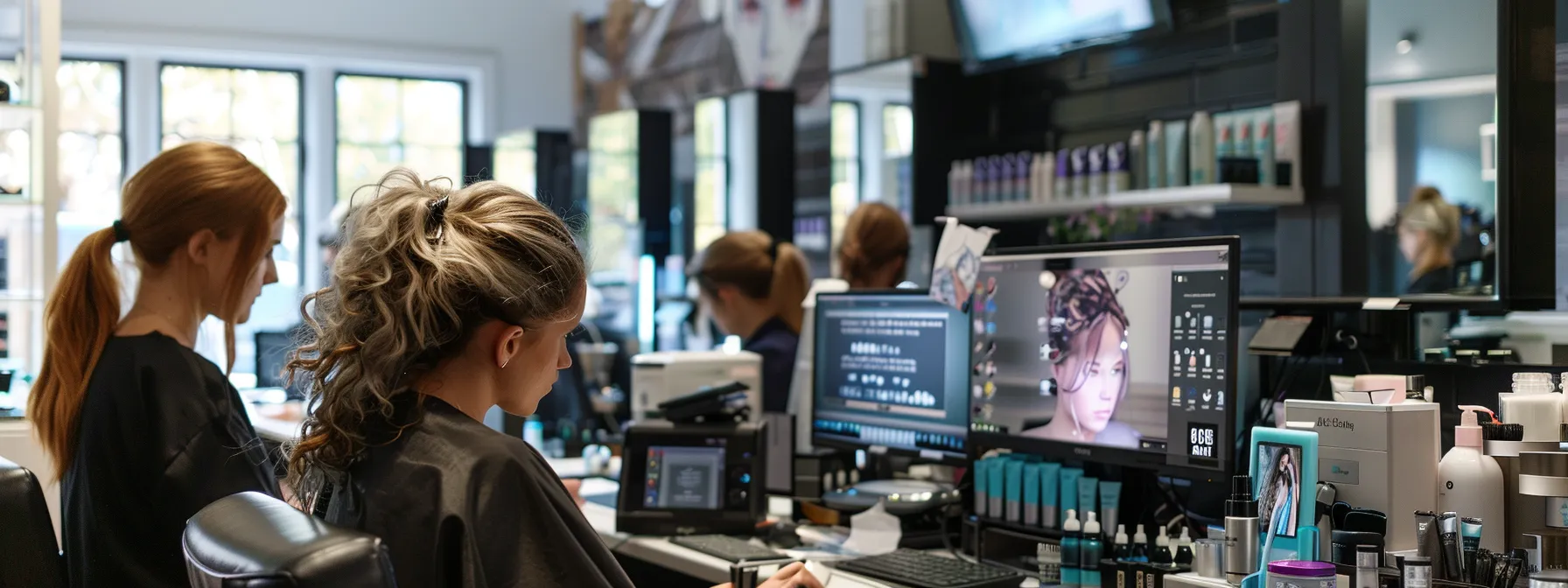

Integrating social media and SEO strategies creates a powerful synergy for hair salons seeking to enhance their online visibility. By leveraging social media profiles to support SEO efforts, promoting blog content across various platforms, encouraging user-generated content and hashtags, and integrating social media reviews onto salon websites, businesses can significantly boost their digital presence. This comprehensive approach not only improves search engine rankings but also fosters engagement with potential clients, showcasing the salon’s expertise and building trust within the community. The following sections explore these tactics in detail, providing salon owners with actionable insights to maximize their online impact and attract more clients through strategic social media and SEO integration.
Using Social Media Profiles to Boost Your Website’s SEO
Social media profiles serve as powerful tools for hair salons to boost their website‘s SEO performance. By optimizing social media bios, including website links, and consistently sharing relevant content, salons can increase their online visibility and drive traffic to their websites. These profiles act as additional touchpoints for search engines, reinforcing the salon’s online presence and authority in the beauty industry.
Salons can leverage social media platforms to create and share engaging content that aligns with their SEO strategy. By incorporating relevant keywords and hashtags in social media posts, salon owners can improve their discoverability and attract potential clients searching for specific hair services. This approach not only enhances the salon’s search engine rankings but also increases brand awareness and engagement across multiple channels.
Cross-promoting website content on social media platforms creates a symbiotic relationship between a salon’s online properties. By sharing blog posts, service updates, and special offers on social media, salons can generate backlinks and social signals that positively impact their website‘s SEO. This integrated approach ensures that the salon’s digital marketing efforts work cohesively to maximize online visibility and attract more clients.
Promoting Blog Content Across Social Platforms
Promoting blog content across social platforms amplifies a hair salon’s reach and drives traffic to its website. Salon owners should tailor their content for each platform, utilizing platform-specific features like Instagram Stories or Twitter polls to maximize engagement. This approach ensures that blog posts receive maximum exposure and attract potential clients from diverse social media channels.
Implementing a content calendar helps salon owners maintain a consistent posting schedule across social platforms. By planning and scheduling blog promotions in advance, salons can ensure regular engagement with their audience and maintain a steady flow of traffic to their website. This strategic approach allows salon owners to align their social media efforts with their overall SEO strategy.
Encouraging social sharing of blog content can significantly boost a salon’s online visibility and attract new followers. Salon owners can incorporate social sharing buttons on their blog posts and create visually appealing graphics that entice readers to share content on their own social profiles. This user-generated promotion extends the reach of the salon’s content and contributes to improved search engine rankings:
Encouraging User-Generated Content and Hashtags
Encouraging user-generated content and hashtags empowers hair salon clients to become brand advocates, amplifying the salon’s online presence. Salon owners can create unique, branded hashtags that customers use when sharing their new hairstyles on social media platforms. This strategy not only increases the salon’s visibility but also provides authentic, relatable content that resonates with potential clients.
Salon owners can incentivize user-generated content by hosting photo contests or offering discounts for clients who share their experiences online. These initiatives foster engagement and create a sense of community around the salon brand. The resulting content serves as social proof, influencing potential clients and improving the salon’s search engine rankings through increased social signals.
Integrating user-generated content into the salon’s website and social media profiles enhances the overall marketing strategy. By featuring client photos and testimonials prominently, salon owners showcase real-world results and build trust with prospective customers. This approach combines the power of word-of-mouth marketing with digital strategies, creating a cohesive online presence that supports SEO efforts and attracts new clients.
Integrating Social Media Reviews Onto Your Salon Website
Integrating social media reviews onto a salon website provides powerful social proof and enhances the salon’s credibility. By displaying authentic customer feedback directly on their website, salon owners can showcase their expertise and quality of service to potential clients. This integration creates a seamless experience for visitors, allowing them to access valuable information without leaving the salon’s website.
Salon owners can leverage various tools and plugins to automatically import and display social media reviews on their websites. These solutions often allow for customization, enabling salons to filter reviews based on ratings or keywords and maintain a consistent brand aesthetic. By regularly updating and highlighting positive reviews, salons can create a dynamic and engaging website that reflects their current reputation and attracts new clients.
Incorporating social media reviews into strategic locations on the salon website can significantly impact user behavior and conversions. Placing reviews near service descriptions or pricing information provides valuable context for potential clients making booking decisions. This approach not only improves the salon’s SEO performance by increasing user engagement and time spent on the website but also builds trust with prospective customers:
- Select appropriate review integration tools or plugins
- Customize the display of reviews to match the salon’s branding
- Strategically place reviews near key conversion points on the website
- Regularly update and monitor displayed reviews for relevance
- Encourage satisfied clients to leave reviews on social media platforms
Results matter in the competitive world of hair salon marketing. Tracking and analyzing SEO performance provides crucial insights to refine strategies and maximize visibility.
Tracking and Analyzing Your Hair Salon’s SEO Performance
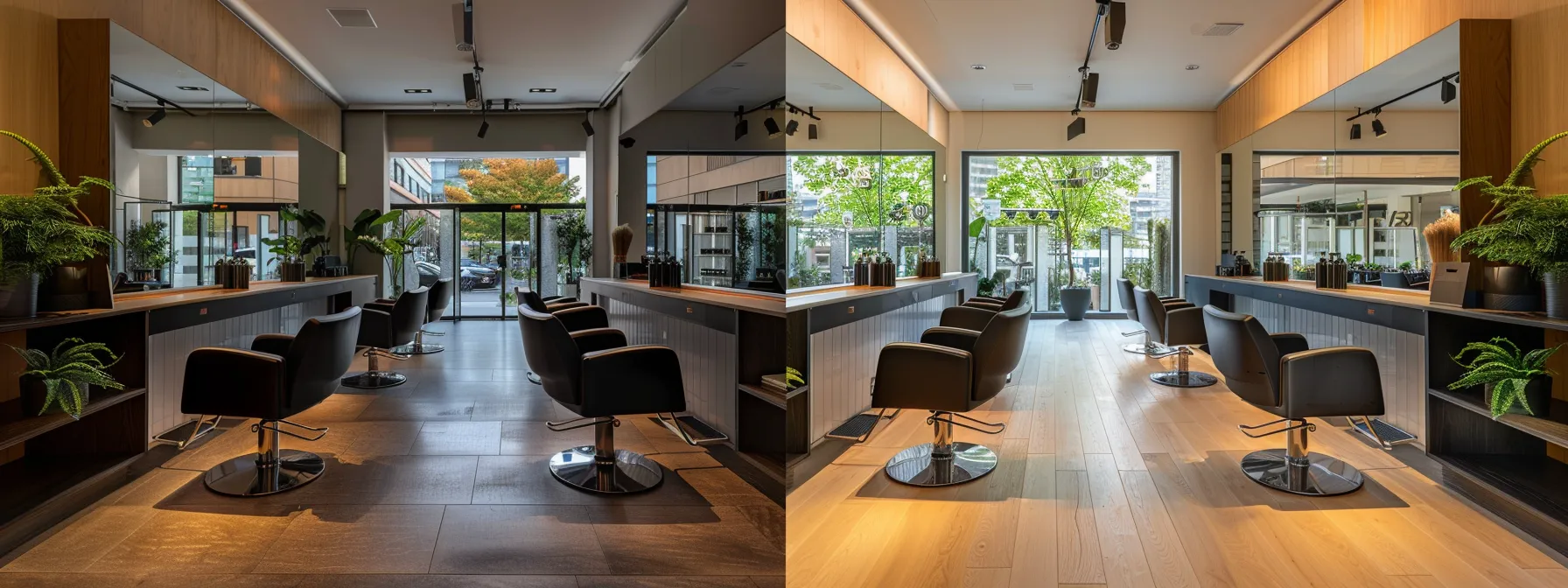

Tracking and analyzing SEO performance is crucial for hair salons aiming to maximize their online visibility. By implementing robust analytics tools, monitoring keyword rankings, conducting regular audits, and adapting strategies based on performance data, salon owners can fine-tune their digital marketing efforts for optimal results. This data-driven approach enables salons to identify strengths and weaknesses in their SEO campaigns, capitalize on emerging opportunities, and stay ahead of competitors in the ever-evolving digital landscape. The following sections explore key techniques for measuring and improving a salon’s SEO performance, providing actionable insights to drive sustainable growth and attract more clients through search engines.
Setting Up Google Analytics for Your Salon Website
Setting up Google Analytics for a salon website provides valuable insights into visitor behavior and website performance. Salon owners can track key metrics such as page views, bounce rates, and conversion rates to make data-driven decisions about their online marketing strategies. This powerful tool enables salons to understand their audience better and optimize their website for improved user experience and search engine rankings.
To set up Google Analytics, salon owners must create a Google account and add the tracking code to their website. This process involves generating a unique tracking ID and inserting it into the website‘s HTML code or using a plugin for popular content management systems. Once installed, Google Analytics begins collecting data on website traffic and user interactions, providing a comprehensive overview of the salon’s online performance.
Customizing Google Analytics settings allows salon owners to focus on metrics most relevant to their business goals. By setting up goals and conversions, salons can track specific actions such as appointment bookings or newsletter sign-ups. This targeted approach helps identify areas for improvement and measure the effectiveness of SEO efforts:
- Create a Google Analytics account and obtain tracking code
- Install tracking code on salon website
- Set up custom goals and conversions
- Configure filters to exclude internal traffic
- Create custom reports for easy data analysis
- Integrate Google Analytics with other marketing tools
Using SEO Tools to Track Keyword Rankings and Traffic
SEO tools empower salon owners to track keyword rankings and monitor website traffic effectively. These specialized platforms provide comprehensive insights into search engine performance, allowing salons to identify high-performing keywords and areas for improvement. By regularly analyzing keyword rankings, salon owners can refine their content strategy and optimize their website for better search visibility.
Popular SEO tools like SEMrush, Ahrefs, and Moz offer features tailored to tracking keyword performance and analyzing competitors. These platforms enable salon owners to monitor their website‘s position in search results for specific keywords and compare their rankings against competitors. By leveraging these insights, salons can identify new keyword opportunities and adjust their SEO strategy to capture more organic traffic.
Integrating SEO tools with Google Analytics enhances the depth of data available to salon owners. This combination provides a holistic view of website performance, linking keyword rankings to actual traffic and user behavior. Salon owners can use this information to prioritize high-impact keywords, optimize underperforming pages, and allocate resources effectively to maximize their SEO efforts.
Conducting Regular SEO Audits to Identify Areas for Improvement
Regular SEO audits provide hair salon owners with valuable insights into their website‘s performance and identify areas for improvement. These comprehensive evaluations examine various aspects of a salon’s online presence, including technical SEO elements, content quality, and backlink profiles. By conducting periodic audits, salon owners can stay ahead of algorithm updates and maintain a competitive edge in search engine rankings.
SEO audits help salon owners uncover hidden issues that may be hindering their website‘s performance. These assessments reveal potential problems such as broken links, duplicate content, or slow loading speeds that negatively impact user experience and search engine rankings. Addressing these issues promptly ensures that the salon’s website remains optimized for both search engines and potential clients.
Implementing recommendations from SEO audits allows salon owners to prioritize their optimization efforts effectively. By focusing on high-impact improvements identified during the audit process, salons can allocate resources efficiently and achieve measurable results. Regular audits also enable salon owners to track progress over time, ensuring that their SEO strategy remains aligned with business goals and industry best practices.
Adapting Your SEO Strategies Based on Performance Data
Adapting SEO strategies based on performance data enables salon owners to refine their digital marketing efforts continually. By analyzing metrics such as organic traffic, keyword rankings, and conversion rates, salons can identify which tactics yield the best results and allocate resources accordingly. This data-driven approach ensures that SEO efforts remain aligned with business goals and industry trends.
Performance data reveals opportunities for content optimization and expansion. Salon owners can identify high-performing pages and topics, then create additional content to capitalize on these successful areas. Conversely, underperforming content can be revised or repurposed to better meet user needs and search engine requirements.
Regularly adjusting SEO strategies based on performance data allows salons to stay ahead of algorithm updates and changing user behaviors. By monitoring key performance indicators and industry benchmarks, salon owners can proactively adapt their approach to maintain and improve their search engine rankings. This agile strategy ensures that the salon’s online presence remains competitive and continues to attract potential clients:
- Analyze organic traffic patterns and user behavior
- Identify high-performing keywords and content topics
- Optimize underperforming pages and content
- Adjust link-building strategies based on backlink quality
- Monitor local SEO performance and adapt local listing management
- Refine social media integration based on engagement metrics
SEO success doesn’t come without hurdles. Let’s explore how to overcome common challenges hair salons face in their digital marketing journey.
Overcoming Common SEO Challenges for Hair Salons
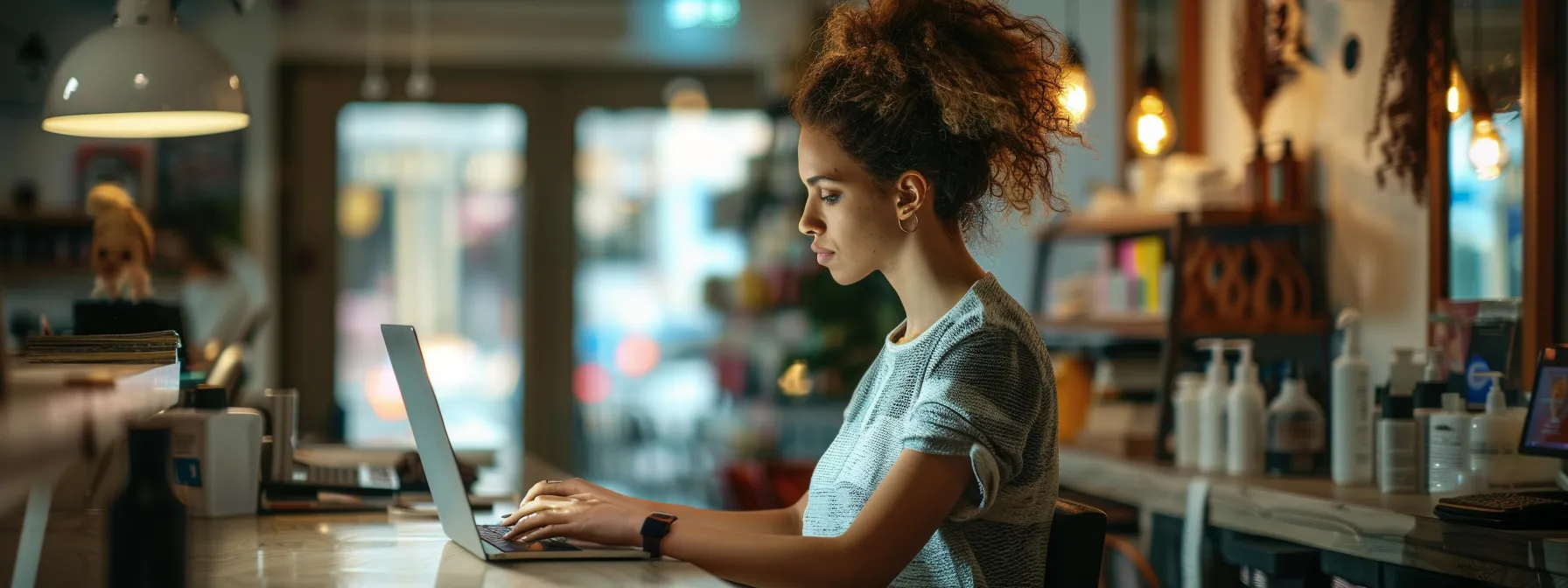

Hair salons face unique challenges in the competitive digital landscape, requiring tailored SEO strategies to overcome obstacles and enhance online visibility. Common issues include managing duplicate content across service pages, addressing low organic search traffic, mitigating the impact of negative reviews on search rankings, and adapting to frequent algorithm updates. By implementing targeted solutions for these challenges, salon owners can improve their website‘s performance, attract more potential clients, and stay ahead of competitors in search engine results. The following sections explore practical approaches to overcome these SEO hurdles, providing actionable insights for salon owners to optimize their digital presence and drive sustainable growth.
Addressing Duplicate Content Issues on Salon Websites
Addressing duplicate content issues on salon websites requires a strategic approach to ensure each page offers unique value to visitors and search engines. Salon owners often face challenges with service pages that contain similar descriptions or pricing information, leading to potential duplicate content penalties. Implementing a structured content strategy that focuses on creating distinct, valuable content for each service page helps overcome this common SEO hurdle.
Utilizing canonical tags effectively prevents search engines from indexing duplicate content across multiple pages. This technical solution allows salon owners to specify the preferred version of a page, consolidating ranking signals and avoiding potential penalties. Combining canonical tags with unique meta descriptions and title tags for each service page further differentiates content and improves search engine visibility.
Creating custom content for each service page, highlighting unique aspects of treatments and stylist expertise, effectively combats duplicate content issues. Salon owners can incorporate client testimonials, before-and-after photos, and detailed process descriptions to make each page distinct and valuable to potential clients. This approach not only resolves duplicate content concerns but also enhances the overall user experience and search engine rankings.
Improving Low Organic Search Traffic
Improving low organic search traffic requires a multifaceted approach tailored to the unique needs of hair salons. Salon owners must focus on optimizing their website‘s content, structure, and technical elements to increase visibility in search engine results pages. By implementing a comprehensive SEO strategy that addresses on-page and off-page factors, salons can attract more potential clients and boost their online presence.
Conducting thorough keyword research and incorporating relevant terms throughout the website helps improve organic search traffic. Salon owners should target a mix of broad and long-tail keywords related to their services, location, and industry expertise. Creating high-quality, informative content that addresses common hair care concerns and showcases the salon’s unique offerings can significantly increase organic traffic and engagement.
Enhancing the salon’s local SEO efforts plays a crucial role in improving organic search traffic. Optimizing Google My Business listings, encouraging customer reviews, and building local citations contribute to better visibility in local search results. Salon owners should also focus on creating location-specific landing pages and content to attract nearby clients searching for hair care services.
Dealing With Negative Reviews and Their SEO Impact
Negative reviews can significantly impact a hair salon’s SEO performance and online reputation. Salon owners must address unfavorable feedback promptly and professionally to mitigate potential damage to their search rankings. Implementing a proactive review management strategy helps maintain a positive online presence and customer trust.
Responding to negative reviews with empathy and offering solutions demonstrates the salon’s commitment to customer satisfaction. This approach not only addresses the immediate concern but also showcases the business’s professionalism to potential clients reading reviews. Encouraging satisfied customers to leave positive reviews helps balance the overall rating and improves the salon’s visibility in local search results.
Leveraging negative feedback as an opportunity for improvement can lead to positive SEO outcomes. Salon owners should analyze recurring issues mentioned in reviews and implement necessary changes to enhance their services. Highlighting these improvements in website content and social media updates signals to search engines that the business actively addresses customer concerns:
Staying Updated With Google’s Algorithm Changes
Hair salon owners must stay informed about Google’s algorithm changes to maintain and improve their search engine rankings. Regular monitoring of industry news sources, SEO blogs, and official Google announcements helps salon owners anticipate and adapt to updates. This proactive approach ensures that SEO strategies remain effective and aligned with current best practices.
Implementing a flexible SEO strategy allows salons to quickly adjust to algorithm changes without compromising their online visibility. Focusing on creating high-quality, user-centric content and maintaining a technically sound website provides a solid foundation for weathering algorithm updates. Salon owners should prioritize long-term SEO practices that align with Google’s core principles of providing valuable, relevant information to users.
Collaborating with SEO professionals or agencies specializing in the beauty industry can help salon owners navigate complex algorithm changes. These experts provide valuable insights into emerging trends and offer tailored solutions to address specific challenges faced by hair salons. By leveraging professional expertise, salon owners can optimize their digital presence and maintain a competitive edge in search engine results.
Frequently Asked Questions
How can local SEO benefit my hair salon’s online visibility?
Local SEO can significantly boost a hair salon’s online visibility by optimizing its digital presence for location-based searches. This strategy helps the salon appear in local search results, Google Maps, and business directories, making it easier for nearby potential clients to find and choose the salon’s services. Implementing local SEO techniques, such as claiming and optimizing Google My Business listings, gathering positive customer reviews, and creating location-specific content, can improve the salon’s search engine rankings. This increased visibility can lead to more website traffic, phone calls, and ultimately, more appointments and revenue for the hair salon.
What are the key elements of an SEO-optimized website for hairdressers?
An SEO-optimized website for hairdressers should include relevant keywords in page titles, meta descriptions, and content. It must have a mobile-friendly design, fast loading speed, and secure HTTPS protocol. High-quality images of hairstyles and services, along with customer reviews, enhance credibility and attract potential clients. Local SEO is crucial for hairdressers. The website should feature accurate business information, including name, address, and phone number (NAP). Incorporating a Google My Business listing, local keywords, and location-based content helps improve visibility in local search results and attracts nearby customers.
How does content marketing contribute to a hair salon’s SEO success?
Content marketing enhances a hair salon’s SEO success by creating valuable, relevant information that attracts and engages potential clients. By producing blog posts, tutorials, and styling tips, salons can target keywords related to hair care, trends, and services, improving their search engine visibility and attracting organic traffic. Consistently publishing high-quality content also establishes the salon as an industry authority, encouraging backlinks and social shares. This increased online presence and user engagement signals search engines that the salon’s website is a trustworthy source of information, potentially boosting its rankings for relevant search queries.
What are effective link-building strategies for hair salon websites?
Effective link-building strategies for hair salon websites include creating high-quality content that attracts natural backlinks. This can involve writing informative blog posts about hair care tips, styling trends, and product reviews. Collaborating with local beauty influencers and participating in community events can also generate valuable links. Another strategy is to reach out to complementary businesses, such as makeup artists or fashion boutiques, for mutual link exchanges. Submitting the salon’s website to relevant online directories and industry-specific platforms can also boost link profile. Additionally, encouraging satisfied clients to leave reviews on popular platforms can indirectly improve link-building efforts.
How can I track and measure my hair salon’s SEO performance?
To track and measure a hair salon’s SEO performance, start by setting up Google Analytics and Google Search Console. These tools provide valuable insights into website traffic, search rankings, and user behavior. Monitor key metrics such as organic search traffic, bounce rate, and conversion rates to gauge SEO effectiveness. Regularly analyze keyword rankings using tools like SEMrush or Ahrefs to identify improvement opportunities. Track local SEO performance by monitoring Google Business Profile insights, including views, clicks, and customer actions. Consistently gather and respond to customer reviews to enhance online reputation and visibility.

